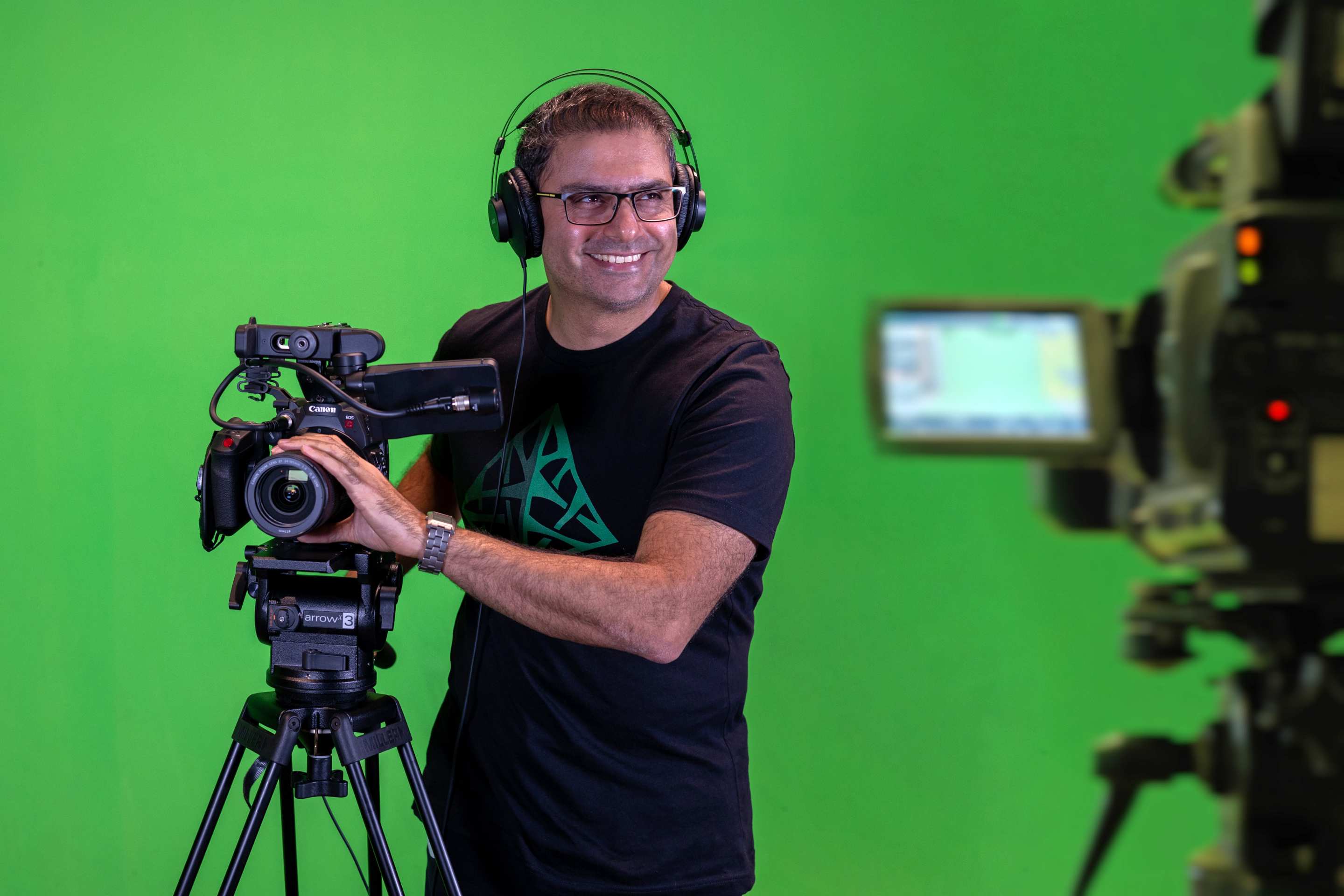
Reza is an artist and a certified higher-education professional from Sydney Australia, a Senior Fellow and Master of Information Technologies and Multimedia Design graduate. He is one of the three Nuke Certified Trainers in Australia, an Autodesk Certified Professional, and an Adobe Certified Expert in Video.
Since he can remember, animation and motion pictures was part of Reza’s life. He remembers carrying his stories and drawings to family gatherings and events when he was only seven. He also remembers the first time his father’s colleague showed him how to model a 3D object in 3D Studio 4.0 back in the early 90s and at that very moment, he thought to himself: “I want to do this for the rest of my life”.
Reza kickstarted his career as an environment modeller in Tehran back in 1994. He started working with a few friends and went from doing small commercial ads to working on big international projects as an FX artist and eventually Lighter in the span of 13 years. He moved to Australia in 2004, fell in love with the country, and called Australia home a few years after that.
Since then, he has been working as a full-time CG and VFX trainer hoping to give back and share his knowledge with students. Currently, he works as a VFX trainer at Industrial Light & Magic and earns a living out of something that he truly loves.
What inspired you to become a visual effects trainer?
A deep love and fascination for the art and craft of visual effects has inspired me to share my knowledge and expertise with others. Being a CG trainer often involves working in an educational institution, studio, or training facility. Luckily, I enjoy a collaborative and interactive environment. Because of that, teaching provides me with opportunities to engage with junior artists, collaborate with fellow instructors, and participate in a dynamic community of VFX enthusiasts.
How did your university qualifications help you get started in this career path?
At the present time, my university qualifications are seen as a mark of achievement and expertise in my field of work. It is common for studios and educational institutions to prioritise candidates with relevant university degrees, as it demonstrates a commitment to learning, discipline, and the ability to complete a structured program of study. I feel thankful to be called a ‘University of Sydney alumni’ and I strive to contribute to this amazing community in the future.
Having said that, it’s important to note that while university qualifications can provide a strong foundation, practical experience, continuous learning, and the development of transferable skills are also crucial for success in the Computer Graphics domain. It’s often a combination of education, experience, and personal drive that artists excel in their chosen fields.

What has been the most exciting or challenging project you’ve worked on since working at Industrial Light & Magic (Walt Disney)?
VFX involves intricate software tools, techniques, and workflows. Throughout the year I found out that training artists to navigate and master these technologies can be quite challenging, as they often require a deep understanding of multiple software applications, programming languages, and artistic principles.
In addition to this, VFX training programs often attract students from various educational and professional backgrounds, including artists, computer scientists, and filmmakers. As a result, we must tailor our teaching methods to accommodate the diverse skill sets and learning styles of our learners and that can quite challenging sometimes.
To address these challenges, I stay updated with our industry trends and create a supportive learning environment that encourages both technical and creative growth through my YouTube channel.
What advice do you have for aspiring visual effects artists who are just starting out in their careers?
The first step is to build a strong foundation by learning the core principles of art, design, and animation. Understand concepts such as colour theory, composition, lighting, and movement.
Also, embrace continuous learning! The visual effect world is an ever-evolving field. Stay curious and keep up with industry trends and advancements. Seek out new challenges and opportunities to learn and grow.
Last but to least, build a strong work ethic! I know it may sound a bit scary but Visual effects work can be demanding, with tight deadlines and long hours. Cultivate a strong work ethic and demonstrate reliability, professionalism, and a willingness to go the extra mile. Be proactive, take initiative, and be open to feedback and constructive criticism.
What has been your biggest career achievement to date?
Being a trainer has allowed me to impact the lives and careers of aspiring VFX artists. By nurturing their talents, providing guidance, and helping them overcome challenges, I make a positive difference in their professional journeys. This sense of fulfilment and the opportunity to contribute to the growth of our VFX community is without a doubt my biggest achievement.








